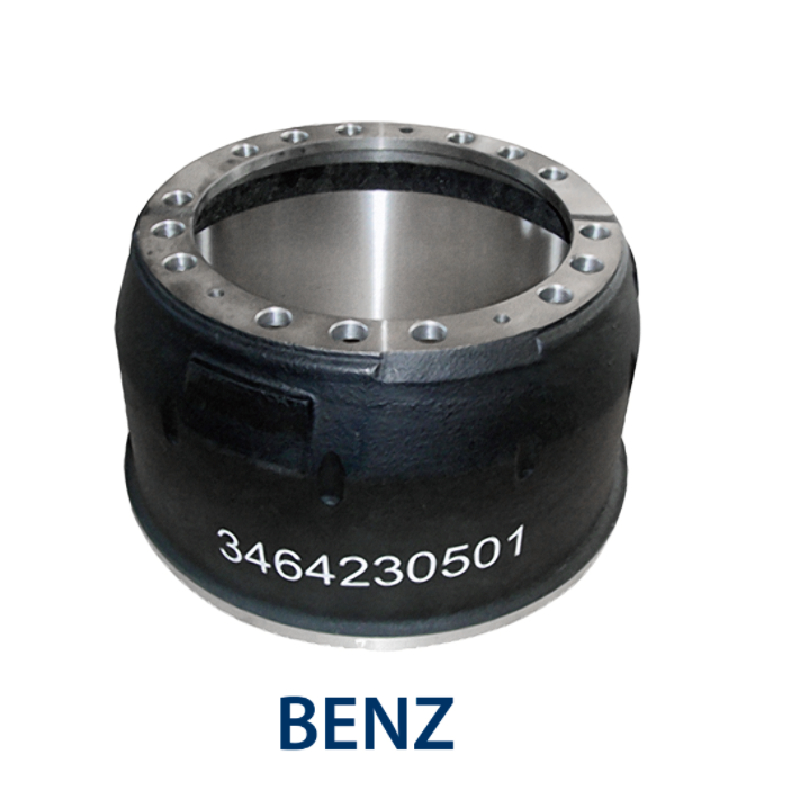Dec . 15, 2024 15:02 Back to list
Brake Drum Assembly Components and Installation Guide for Optimal Performance
Understanding Brake Drum Assembly Components and Functions
Brake systems are crucial for the safety and performance of vehicles. Among the various components of a braking system, the brake drum assembly plays a vital role, particularly in older vehicles or certain types of heavy machinery that utilize drum brakes. In this article, we will explore the composition, function, and maintenance of brake drum assemblies, shedding light on their importance in overall vehicle efficiency and safety.
What is a Brake Drum Assembly?
A brake drum assembly consists of several components that work together to slow down or stop a vehicle when the brake pedal is pressed. The primary components of a brake drum assembly include the brake drum, brake shoes, wheel cylinder, return springs, and adjuster mechanisms. Together, they create a hydraulic action that generates friction—thus enabling the vehicle to decelerate effectively.
Components of the Brake Drum Assembly
1. Brake Drum The brake drum is a cylindrical part that is mounted on the wheel hub. When the brakes are engaged, the brake shoes expand against the inner surface of the drum. The friction between these components slows down the rotation of the wheel, contributing to the vehicle's stopping power.
2. Brake Shoes These are curved components lined with friction material. When the brake pedal is pressed, hydraulic fluid from the wheel cylinder pushes the brake shoes outward against the drum, creating friction. The quality and condition of the friction material can greatly influence braking performance.
3. Wheel Cylinder The wheel cylinder is a hydraulic component containing pistons. When the brake pedal is pressed, hydraulic pressure is generated, causing the pistons to move outward, pushing the brake shoes against the drum.
4. Return Springs These springs are critical for the proper functioning of the brake system. They help retract the brake shoes back into their resting position when the brakes are released, ensuring that the brake shoes do not continuously contact the drum, which could lead to excessive wear or overheating.
5. Adjuster Mechanisms The adjuster, typically a threaded screw, helps maintain the correct distance between the brake shoes and the drum. Over time, as the shoes wear down, the adjuster automatically compensates for this wear, ensuring consistent braking performance.
brake drum assembly

The Functioning of the Brake Drum Assembly
When a driver applies the brakes, the pedal activates the master cylinder, sending hydraulic fluid through the brake lines to the wheel cylinders located at each wheel. The hydraulic pressure pushes the pistons in the wheel cylinder outward, causing the brake shoes to press against the inner surface of the brake drum. The friction generated during this action slows down the wheel and ultimately brings the vehicle to a stop.
The effectiveness of the brake drum assembly depends on various factors, including the condition of the brake shoes, the integrity of the brake drum, and the proper functioning of all hydraulic components. Regular maintenance is crucial to ensure that all parts operate seamlessly.
Maintenance of Brake Drum Assembly
Proper maintenance of the brake drum assembly is essential for vehicle safety. Here are some key maintenance tips
- Regular Inspections Check the brake shoes and drums for wear and tear at regular intervals. If the friction material on the shoes is worn down or if the drum surface is scored, replacement may be necessary.
- Adjustment Ensure that the adjusters are functioning correctly. If the brake shoes are not maintaining the appropriate distance from the drum, it can lead to poor braking performance and increased wear.
- Hydraulic System Maintenance Maintain proper hydraulic fluid levels and check for any leaks. The hydraulic system's integrity is vital for delivering effective braking power.
- Cleaning Keep the brake assembly clean from dust and debris. Accumulation of dirt can affect the performance of the brake shoes and drums.
In conclusion, the brake drum assembly is a vital component of a vehicle’s braking system, contributing significantly to safety and controlling vehicle speed. Understanding its components and maintaining it properly can ensure reliable performance and prolong the lifespan of the braking system. Whether in personal vehicles or heavy machinery, the importance of an efficiently functioning brake drum assembly cannot be overstated. Proper care and attention can make a significant difference in on-road safety and driving experience.
-
Scania Brake Drums: OEM Quality for Optimal Safety & Durability
NewsAug.16,2025
-
R.V.I: Advanced Remote Visual Inspection for Precision
NewsAug.15,2025
-
Discover HYUNDA: Innovative Vehicles, Equipment & Solutions
NewsAug.14,2025
-
R.V.I: Unlock Advanced Insights & Real-time Performance
NewsAug.13,2025
-
Kamaz Brake Drum: Durable & Reliable for Heavy Duty Trucks
NewsAug.12,2025
-
Heavy Duty Iveco Brake Drum - Premium Quality & Safety
NewsAug.11,2025
